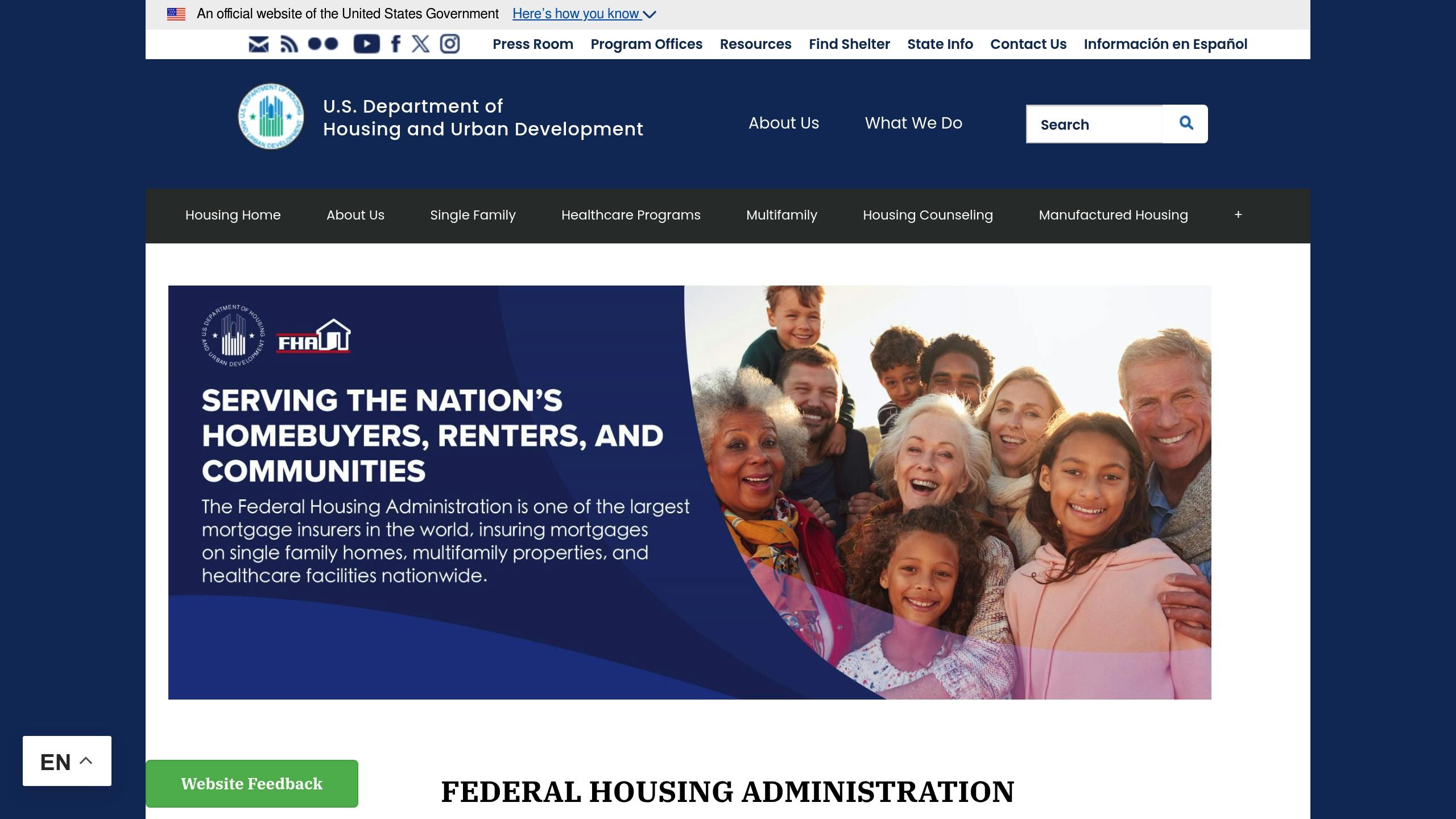Getting denied for a mortgage can be frustrating, but it’s not the end of the road. Here’s how you can bounce back:
-
Understand Why You Were Denied
- Review the denial letter (adverse action notice) for specific reasons.
- Check your credit report for errors and request corrections if needed.
-
Fix Key Issues
- Credit Score: Aim for 620+ for conventional loans. Pay down credit card balances and ensure on-time payments.
- Debt-to-Income Ratio (DTI): Keep it below 43% by reducing debt or increasing income.
- Employment History: Maintain steady income for at least two years.
-
Explore Other Loan Options
- FHA Loans: Credit scores as low as 500 with 10% down.
- VA Loans: No down payment for eligible veterans.
- USDA Loans: 0% down for rural areas.
-
Consider Down Payment Assistance
- Look into grants, forgivable loans, or deferred payment programs to help with upfront costs.
Quick Comparison
| Factor | Conventional Loan | FHA Loan | VA Loan | USDA Loan |
|---|---|---|---|---|
| Credit Score | 620+ | 500 (with 10%) | 580–620 | 640 |
| Down Payment | 5–20% | 3.5–10% | 0% | 0% |
| Income Limits | None | None | None | Yes |
| Ideal For | Strong credit | Low credit score | Veterans | Rural buyers |
Take these steps, improve your financial profile, and reapply when you’re ready. Owning a home is still within reach!
Loan Application Denied? Here’s What To Do Next
Why Lenders Deny Mortgage Applications
Lenders turn down mortgage applications for specific, fixable reasons. In 2022 alone, the denial rate stood at 9.1% [2]. Here’s what you need to know, starting with your denial letter.
Reading Your Denial Letter
Your denial letter, also called an adverse action notice, will include:
- Reasons for the denial
- The credit reporting agency used by the lender
- Your right to request a free credit report
- The timeline for filing an appeal
This letter is your roadmap for identifying and addressing the issues.
Common Reasons for Denial
Mortgage applications often get denied due to these factors:
| Denial Factor | Typical Criteria or Threshold | Why It Matters |
|---|---|---|
| Credit Score | Below 620 | Required for conventional loans [2] |
| Debt-to-Income Ratio | Above 43% | Lenders prefer 36% or lower [2] |
| Employment History | Unstable or inconsistent | Raises concerns over income reliability [3] |
These are the areas to examine if your application was denied.
Identifying Your Issues
Start by reviewing your credit reports for errors, calculating your debt-to-income ratio, and ensuring your employment history shows steady income [1][3].
Steps to Fix Credit and Financial Issues
Taking specific actions to address credit and financial challenges can greatly improve your chances of getting approved after a mortgage denial.
Correct Credit Report Mistakes
Errors on credit reports affect 26% of consumers, potentially making them seem riskier to lenders [5]. When reviewing your reports, look for these common issues:
| Error Type | What to Look For | Proof to Provide |
|---|---|---|
| Identity Errors | Wrong name, address, or phone number | Recent bills, ID documents |
| Account Errors | Incorrect balances or duplicate accounts | Account statements |
| Status Errors | Closed accounts listed as open | Account closure letters |
| Payment Errors | Late payments reported inaccurately | Payment confirmations |
To dispute these errors:
- File disputes with credit bureaus and reach out to creditors directly.
- Include any relevant supporting documents.
- Follow up within 30 days (or 45 days if the dispute was initiated through AnnualCreditReport.com) [4].
"Fixing errors can really help improve your credit score. And that can help you secure a better mortgage loan at a lower rate." – Megan Gorman, Chequers Financial Management [4]
Raise Your Credit Score
Improving your credit score not only increases your chances of approval but also helps you qualify for better mortgage terms. Focus on these key factors:
| Factor | Weight | Quick Improvement Tip |
|---|---|---|
| Payment History | 35% | Set up automatic payments |
| Credit Utilization | 30% | Pay down card balances below 30% |
| Credit Age | 15% | Keep older accounts open |
| Credit Mix | 10% | Maintain a variety of credit types |
| New Credit | 10% | Avoid applying for new credit |
Paying off credit card balances is especially impactful. Rapid rescoring can reflect these changes in your credit score within weeks [6].
"The most effective way to improve your credit score is to pay down your revolving debt." – Daryn Gardner, Jax Federal Credit Union [6]
Better payment habits and lower balances also help you manage your debt-to-income ratio more effectively.
Lower Your Debt-to-Income Ratio
Most lenders prefer a debt-to-income (DTI) ratio below 43%, though some may favor 36% or lower [7].
Here’s how to improve your DTI:
-
Reduce Monthly Payments:
- Focus on paying down high-interest debts first.
- Pay off car loans where possible.
- Hold off on new credit applications.
-
Boost Your Income:
- Ask for a salary review or raise at work.
- Take on extra hours if they’re available.
- Consider starting a side hustle or freelance work.
Lowering your DTI can make you a more attractive borrower and improve your chances of approval.
sbb-itb-8115fc4
Other Mortgage Options to Consider
If you’ve been denied a conventional mortgage, don’t worry – there are other loan programs that might work better for your financial situation. These options often have less strict requirements and can help you move closer to owning a home.
FHA, VA, and USDA Loans
Government-backed loans are known for having more flexible qualification standards compared to conventional loans. Here’s a quick overview of how these programs might help:
| Loan Type | Minimum Credit Score | Down Payment | Benefits |
|---|---|---|---|
| FHA | 500 with 10% down; 580 with 3.5% down | 3.5–10% | Easier to qualify with more forgiving credit requirements |
| VA | No official minimum (most lenders prefer 580–620) | 0% | No down payment and competitive interest rates |
| USDA | Typically 640 | 0% | No down payment and lower fees |
These loans are especially helpful if you have a lower credit score or limited savings for a down payment. Pairing one of these loans with additional resources can make homeownership even more achievable.
Down Payment Assistance Programs
Across the U.S., there are over 2,000 programs designed to help with homeownership, and about 75% of them focus on down payment assistance [8]. These programs come in a variety of forms:
| Assistance Type | How It Works | Requirements |
|---|---|---|
| Grants | Money provided that doesn’t need to be repaid | Income limits, homebuyer education |
| Forgivable Loans | Zero-interest loans forgiven over time | Must live in the home for a set period |
| Deferred Payment Loans | Repayment delayed until you sell or refinance | Purchase price limits |
| Low-Interest Loans | Spread-out costs with lower interest rates | Often location-specific |
Some programs are tailored for specific groups like first-time buyers, teachers, or public servants. On average, first-time buyers using these programs put down about 8% on their home [9].
To find and apply for these programs, try the following:
- Reach out to your state housing authority
- Consult a HUD-approved housing counselor
- Use resources like Down Payment Resource
- Work with lenders familiar with these programs
Each program has its own set of rules, such as income limits, price caps on the home, or required homebuyer education courses [9]. Take the time to explore your options and find the one that fits your needs.
Building a Better Application
Getting denied for a mortgage can be tough, but it’s not the end of the road. Strengthening your next application can make a big difference.
Increase Your Down Payment
Putting more money down can improve your chances of approval and help you secure better loan terms. On average, first-time homebuyers put down about 6% of the home’s price[10].
| Strategy | Benefits | Key Considerations |
|---|---|---|
| Down Payment Assistance | Access to zero-interest loans or grants | May have income limits |
| Retirement Plan Withdrawal | Quick access to funds | Could have tax consequences; repayment may be required if you change jobs |
| Gift Funds | Tax-free within annual limits | Requires proper documentation |
| Asset Sales | Raises funds quickly | Keep detailed transaction records |
| Part-Time Work | Provides additional income | Must be a sustainable source |
A solid financial position also relies on maintaining steady income levels.
Show Steady Income
Lenders look for stability when it comes to your income. Most prefer to see at least two years of consistent employment before approving a mortgage[11].
| Income Type | Documentation Needed | Lender Requirements |
|---|---|---|
| Regular Employment | Pay stubs, W-2s, tax returns | Two years of continuous employment |
| Self-Employment | Business tax returns | Two years of returns with steady income |
| Additional Income | Payment history, court orders | Must show payments continue for 3+ years |
| Multiple Jobs | Employment verification | At least 1–2 years of working multiple jobs |
"Income stability is key detail underwriters consider when reviewing home loan applications."
– Atlantic Coast Mortgage[11]
If you find it challenging to improve your application on your own, professional advice can be a game-changer.
Get Professional Help
Mortgage experts can help fine-tune your application. They’ll assist with documenting income and assets, navigating lender requirements, and finding loan programs that fit your needs.
"A stable income significantly enhances your chances of mortgage approval by reassuring lenders of your financial reliability."
– Dana Hendrix, Senior VP of Finance at DSLD Mortgage[12]
These professionals can also guide you toward building savings, like using high-yield accounts, while helping you present your strongest financial profile.
Next Steps After Denial
Key Actions to Take
Getting denied for a mortgage isn’t the end of the road. Here’s a clear plan to help you move forward:
| Action Step | Immediate Tasks | Timeline |
|---|---|---|
| Contact Lender | Request a written explanation for the denial | Within 1 week |
| Review Credit | Get free credit reports and check for any errors | 1–2 weeks |
| Create Plan | Address the specific issues mentioned in the letter | 3–6 months |
| Track Progress | Monitor improvements in your credit score | Ongoing |
Lenders are required to provide a written explanation for a denial [13]. This document outlines the reasons behind their decision, giving you a clear path to work on improving your financial profile. Focus on addressing those areas and monitor your progress regularly.
Need some extra help navigating these steps? Keep reading to see how HomeLoanAgents can support you.
Reach Out to HomeLoanAgents
Once you have a plan, HomeLoanAgents can help you take the next steps with:
- Tailored mortgage solutions
- Access to various loan programs
- Professional advice on credit and financial improvements
- A user-friendly digital application platform
Our licensed advisors will review your denial letter and create a personalized strategy to increase your chances of approval. Whether you need to improve your credit score, lower your debt-to-income ratio, or explore other loan options, we’ll guide you every step of the way.
HomeLoanAgents blends advanced technology with expert advice, offering nationwide support to help you turn a denial into a future approval.
Related posts









